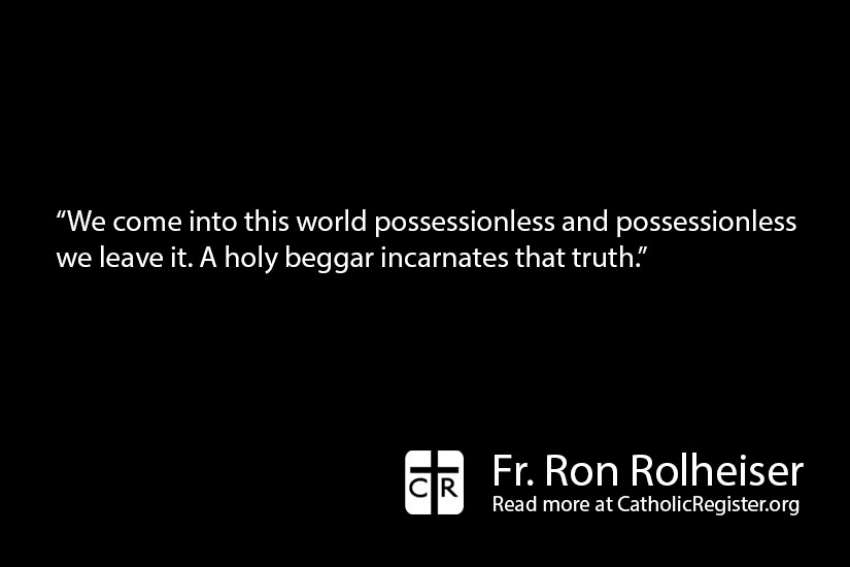It’s not a mystery as to why. Until recently, the majority of people died shortly after retirement, so there was no need for a highly-developed spirituality of generativity after our active years.
What are our retirement years meant for spiritually? What’s our vocation then? What might generativity — guiding and being concerned about others — mean for us after our work’s been done?
Henri Nouwen, one of the first contemporary writers to take up this question, makes a suggestion. There comes a time in our lives when the question is no longer: What can I still do to make a contribution? Rather, the question becomes: How can I live now so that my aging and dying will be my final great gift to my family, my community, my church and my country?
How do I stop writing my résumé in order to begin writing my eulogy? Happily, spiritual writers today are beginning to develop a spirituality around these questions and, in doing that, I believe, we can be helped by some rich insights within Hindu spirituality.
In Hinduism, life is understood to have five natural stages: First, you are a child. As a child, you are initiated into life, you learn to speak, you learn how to interact with others and are given time for play.
The second stage is that of being a student. In Hinduism, you’re a student until you get married, begin a family and establish a career. As a student, your primary focus is to enjoy your youth and to prepare for life.
Then you become a householder. This begins with marriage and ends when your last child is grown, your mortgage is paid and you retire from your job. As a householder, your task is family, business and involvement with civic and religious affairs. These are your duty years.
The fourth stage is that of being a forest dweller. This period should begin when you are free enough from family and business duties to do some deeper reflection. Forest-dwelling is meant to be an extended period wherein you withdraw, partially or fully, from active life to study and meditate on your religion and your future. Very practically, this might mean you go back to school, perhaps study theology and spirituality, do some extensive retreats, engage in a meditative practice and take some spiritual direction from a guide.
Finally, once forest-dwelling has given you a vision, you return to the world as a sannyasin, as a holy beggar, as someone who owns nothing except faith and wisdom. As a sannyasin, you sit somewhere in public as a beggar, as someone with no significance, property, attachments or importance. You’re available to others for a smile, a chat, an exchange of faith or some act of charity.
In effect, you’re a street person, but with a difference. You’re not a street person because you do not have other options (a comfortable retirement, a golf course, a cottage in the country), but rather because you have already made a success of your life. You’ve already been generative. You’ve already given what you have to give and you’re now looking to be generative in a new way, to live in such a way that these last years of your life will give a different kind of gift to your loved ones, namely, a gift that will touch their lives in a way that forces them to think about God and life more deeply.
A sannyasin gives incarnational flesh to the words of Job: “Naked I came from my mother’s womb and naked I return.”
We come into this world possessionless and possessionless we leave it. A holy beggar incarnates that truth.
Imagine what a witness it could be if very successful people, people who have all kinds of comfortable options in life, would be sitting as holy beggars in coffee shops, in fast-food outlets, in malls, on street corners and in sporting arenas. Nobody could feel superior to them or treat them with pity, as we do with the street people who sit there now. Imagine the witness of someone becoming a voluntary beggar because he or she has been a success in life. What a witness and vocation that would be!
But this concept, being a holy beggar, is obviously an idealized image that each of us needs to think through in terms of what that might mean for us concretely.
In the early centuries of Christianity, spirituality saw martyrdom as the final expression of Christian life, the ideal way to cap off a faith-filled life. Justin, Polycarp, Cyprian and countless others “retired” into martyrdom. Later, Christians used to retire into monasteries and convents.
But martyrdom and monasteries are also, at a certain place, idealized images. What, concretely, might we retire into?
(Fr. Rolheiser can be reached at ronrolheiser.com)


